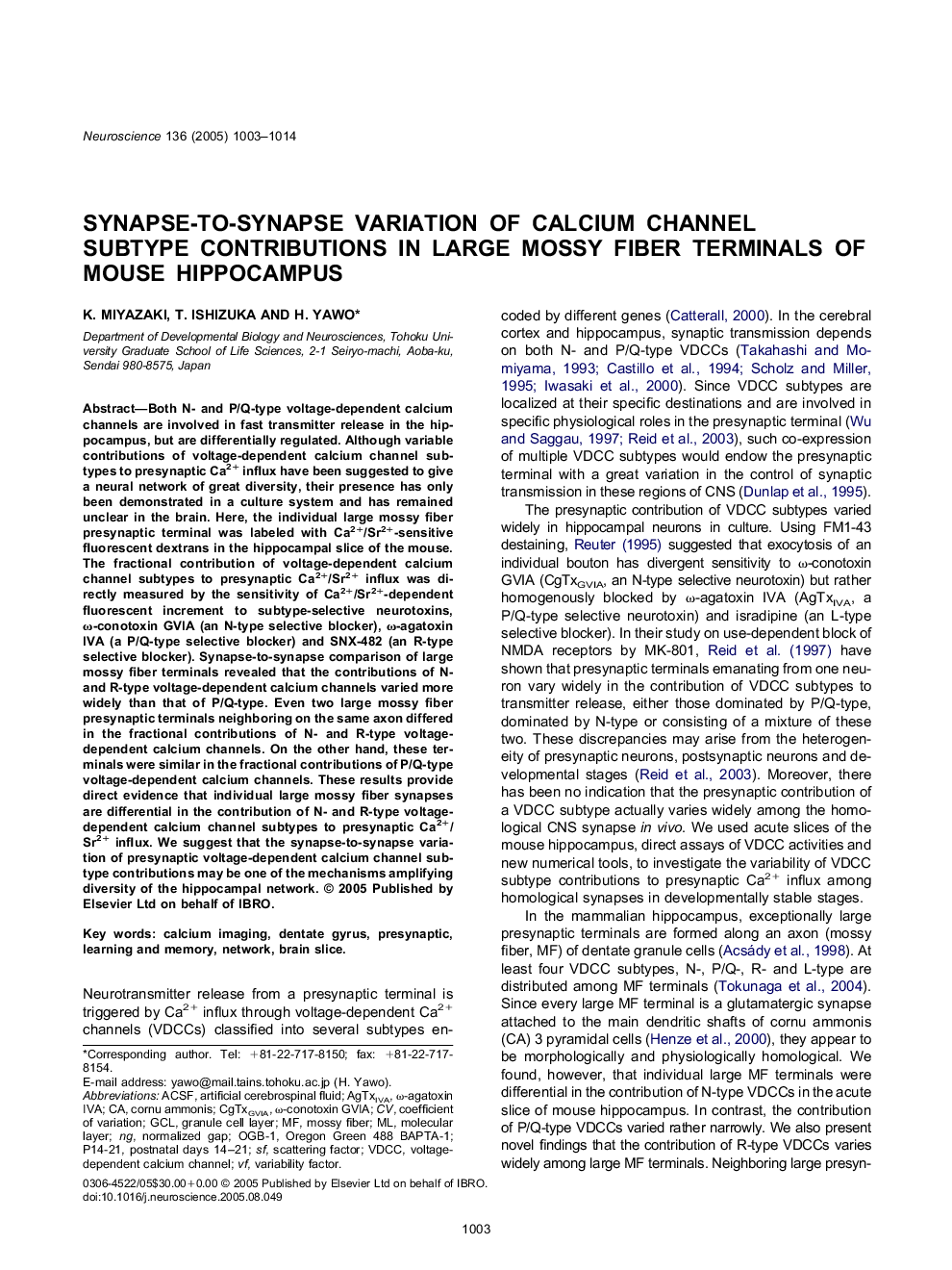| Article ID | Journal | Published Year | Pages | File Type |
|---|---|---|---|---|
| 9425487 | Neuroscience | 2005 | 12 Pages |
Abstract
Both N- and P/Q-type voltage-dependent calcium channels are involved in fast transmitter release in the hippocampus, but are differentially regulated. Although variable contributions of voltage-dependent calcium channel subtypes to presynaptic Ca2+ influx have been suggested to give a neural network of great diversity, their presence has only been demonstrated in a culture system and has remained unclear in the brain. Here, the individual large mossy fiber presynaptic terminal was labeled with Ca2+/Sr2+-sensitive fluorescent dextrans in the hippocampal slice of the mouse. The fractional contribution of voltage-dependent calcium channel subtypes to presynaptic Ca2+/Sr2+ influx was directly measured by the sensitivity of Ca2+/Sr2+-dependent fluorescent increment to subtype-selective neurotoxins, Ï-conotoxin GVIA (an N-type selective blocker), Ï-agatoxin IVA (a P/Q-type selective blocker) and SNX-482 (an R-type selective blocker). Synapse-to-synapse comparison of large mossy fiber terminals revealed that the contributions of N- and R-type voltage-dependent calcium channels varied more widely than that of P/Q-type. Even two large mossy fiber presynaptic terminals neighboring on the same axon differed in the fractional contributions of N- and R-type voltage-dependent calcium channels. On the other hand, these terminals were similar in the fractional contributions of P/Q-type voltage-dependent calcium channels. These results provide direct evidence that individual large mossy fiber synapses are differential in the contribution of N- and R-type voltage-dependent calcium channel subtypes to presynaptic Ca2+/Sr2+ influx. We suggest that the synapse-to-synapse variation of presynaptic voltage-dependent calcium channel subtype contributions may be one of the mechanisms amplifying diversity of the hippocampal network.
Keywords
Related Topics
Life Sciences
Neuroscience
Neuroscience (General)
Authors
K. Miyazaki, T. Ishizuka, H. Yawo,
